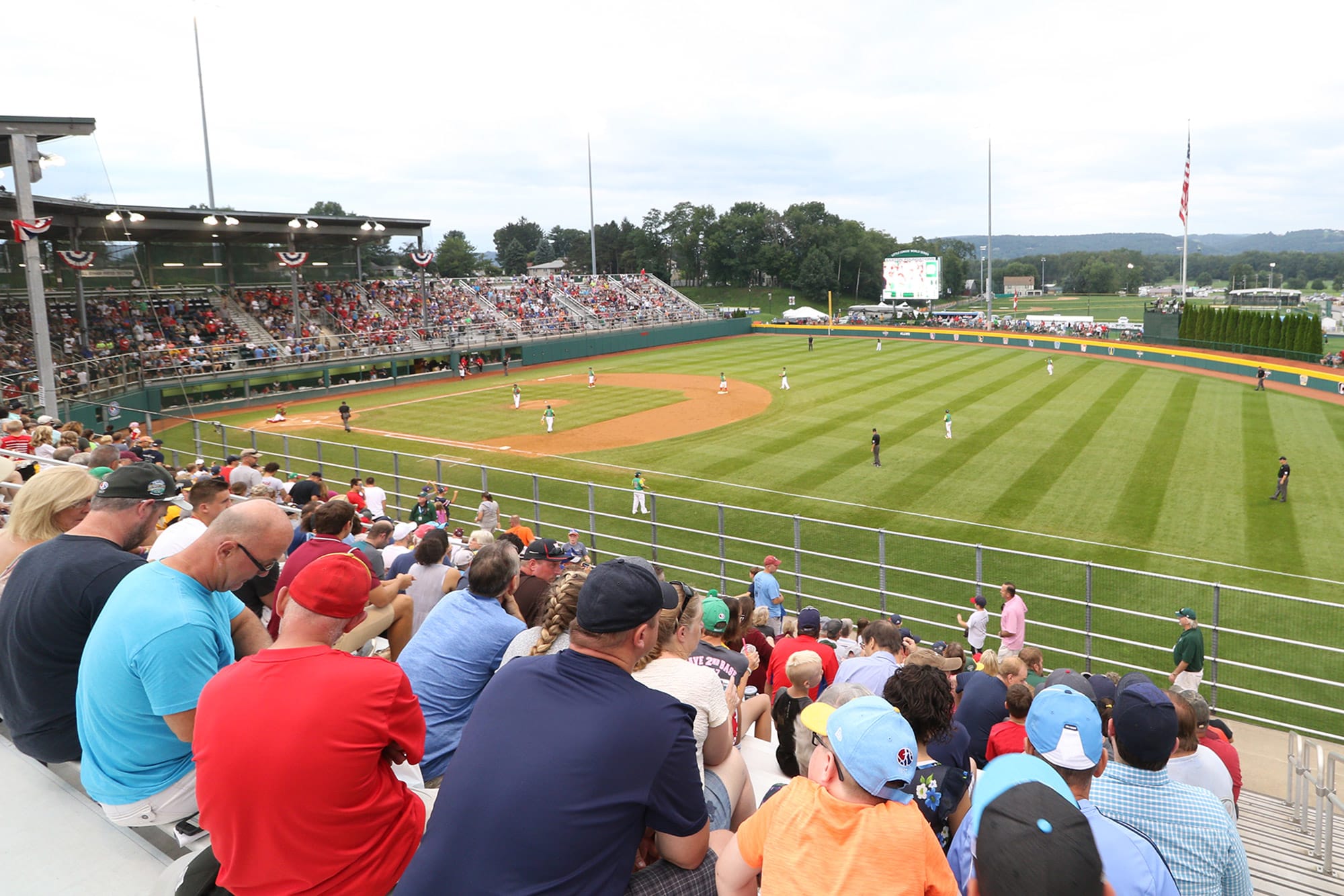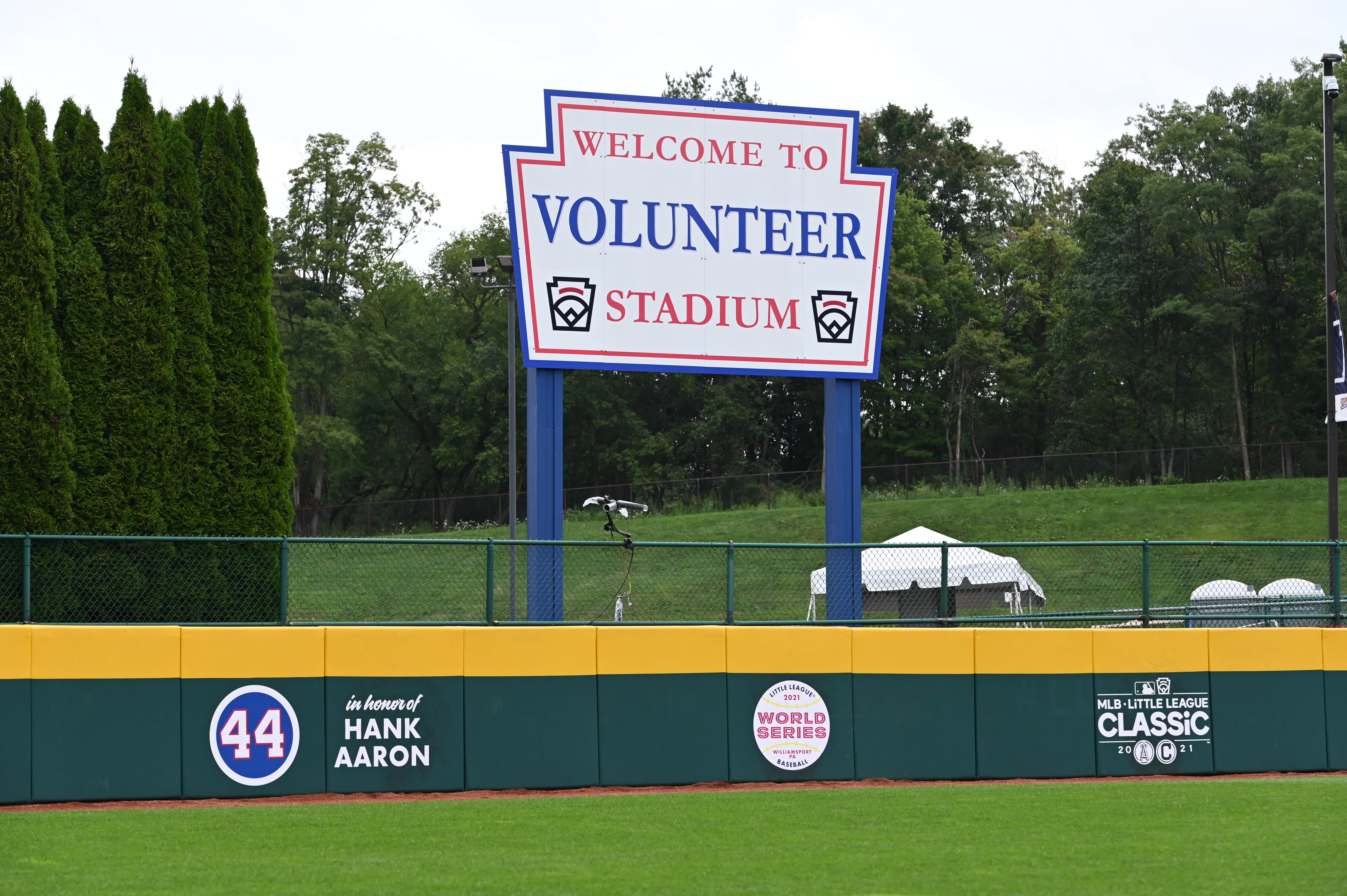
It had been nearly 65 years since the first pitch was thrown at Howard J. Lamade Stadium, christening what is now a “Field of Dreams” for countless Little Leaguers®, but when the call to “Play Ball!” was first heard on the field at Volunteer Stadium in 2001, the Little League program sounded its charge into the next century.
During the late 1990s, the Little League International Board of Directors voted to expand the Little League Baseball® World Series, doubling the tournament from eight to 16 teams. In preparation for the first tournament expansion since its inception, it was necessary to grow its field facilities. The focal point of a multi-year capital campaign, plans came together to develop a concourse and a second World Series stadium using the greenspace to the north of the iconic Lamade Stadium.
A variety of improvements were set in motion across the Little League International Complex in South Williamsport, Pennsylvania. The yet-unnamed second stadium, with seating for 5,000, was designed to have the dimensions that had come to define Little League Baseball – 60-foot basepaths and a pitching distance of 46 feet to home plate.
As construction neared completion, it was time to give the stadium a name. Different from Lamade Stadium, where it was entirely appropriate to recognize the person primarily responsible for Little League securing the land to build on, this naming would become a symbolic gesture and ode to the lifeblood of the Little League program – volunteers. And, in the summer of 2001, Little League Volunteer Stadium came into being.

What makes Volunteer Stadium different and unique from Lamade Stadium are its features, designed with added safety and accessibility in mind.
The stadium is constructed of concrete and steel. The roof covers individual grandstand seating and netting is installed from the façade to the top of the metal fencing, making it challenging for a batted ball to reach spectators.
Underneath the stadium, and out of sight of spectators, are a set of batting cages and bullpen areas for pitchers to throw before entering the game as well as an Athletic Training treatment room just steps away from the playing surface.
Constructed with spacious, ground-level dugouts that are located more than 30 feet from the baselines and several feet past first and third bases, Volunteer Stadium provides easy access for players, coaches, umpires, and staff to access the playing surface.
With its construction in 2001, Volunteer Stadium also became the home to the annual Little League Challenger Division® Exhibition Game, a game that showcases the opportunities that the Little League Challenger Division provides to more than 30,000 children with physical and intellectual challenges in more than 900 leagues worldwide. In addition, the stadium also serves as the home of the Little League Baseball World Series Opening Ceremonies each August.

Beyond the physical structure, Volunteer Stadium has come to embody the Little League ideals of teamwork, sportsmanship, community spirit, and most importantly, providing opportunities for children to experience what makes Little League special in neighborhoods throughout the world.
NOTE: As the world gears up to celebrate the 75th Anniversary of the Little League Baseball® World Series (LLBWS) in August 2022, Little League® International will feature content such as this in a series of franchises that highlights some of the key moments, memories, and people that have made the LLBWS one of the most iconic sporting events in the world. For more information, visit LittleLeague.org/75.
The Link LonkAugust 04, 2022 at 12:26AM
https://www.littleleague.org/news/little-league-volunteer-stadium-the-field-of-opportunity/
Little League® Volunteer Stadium: The Field of Opportunity - littleleague.org
https://news.google.com/search?q=little&hl=en-US&gl=US&ceid=US:en

No comments:
Post a Comment